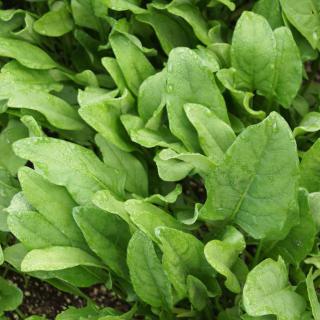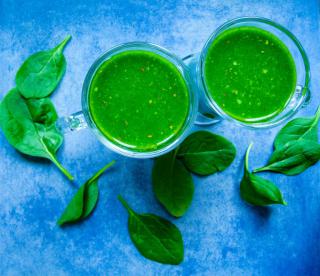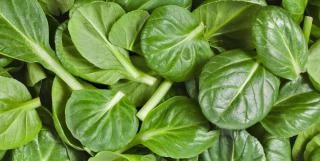

Native to Asia, spinach, or Spinacia oleracea, is a plant that grows quickly and offers delicious leaves that are excellent for health.
It belongs to the Chenopodiaceae (or goosefoot family), now part of the Amaranthaceae family. Its long spear-shaped leaves, flat or bulging, are set up in a shiny bright green rosette. They are from 8 to 16 inches (20 to 40 cm) long, and serve more in the kitchen than in the medicinal herb shed.
Sorry – Popeye the sailorman did not get his strength from the spinach he ate! We all think he did, but actually iron levels in spinach aren’t so high.
It does however boast very high fiber, potassium and vitamin contents, which give the plant a very high nutritional value and surely enhance body functions of whoever ingests it.
________________________________________
Did you know…?
Spinach can be used both internally (infusion) and externally (decoction).
Fortifying wine – add 7 oz (200 g) fresh spinach juice in ¾ quart (¾ liter) wine.
Infusion – ⅓ oz (10 g) seeds per mug. It is a light and mild laxative.
Spinach toxicity – because it contains oxalic acid (oxalates), spinach is forbidden to persons suffering from arthritis, rheumatism and gout. Also, some persons may have strong allergic reactions to oxalates. Though many vegetables contain these compounds, spinach contains more than the average at around 1.2 mg/g.
→ New varieties will hopefully emerge that have lower levels.
So generally still very good to eat, but not overeat, especially for children and elderly persons.

Upon sowing, remember to add manure and seaweed-based organic fertilizer. And water often during dry spells so the plant won’t go to seed.
To propagate spinach, sow in the vegetable patch directly in April or in September-October, 1 inch (2 cm) deep in rows spaced 12 inches (30 cm) apart. Sprouting usually comes ten days later.
It is very easy to grow spinach in 10 inch (25 cm) deep pots, with a substrate that is kept cool at all times.
Spinach hates slugs and snails, downy mildew (a type of mold) that leaves yellow marks on leaves. If seedlings damp off, they turn brown and die.
Be wary as well of the cucumber mosaic virus which weakens plants.
The two most common spinach varieties are ‘Winter giant’ and ‘Monstrueux de Viroflay’.
Are you familiar with strawberry blite? Its latin name is Chenopodium vigatum. It produces edible bright red fruits that are very interesting…

Spinach, a delicacy? Well, they can be despised and loved alike! For the loving part… Run them in a pan with butter and a sliced onion, a touch of cream and a soft boiled egg. Truly delicious!

Blandine Merlin, formatting edits by Gaspard Lorthiois
– Sow your spinach in small batches, every two weeks, and production will be staged, too.
– Even if you’ve read or heard the opposite, don’t sow spinach in summer because they quickly go to seed. Opt instead for Botany bay spinach which has the same taste.